Last updated: April 9, 2025
Article
Young Hatchery Coho Offer Hope and Research Opportunities at Redwood Creek
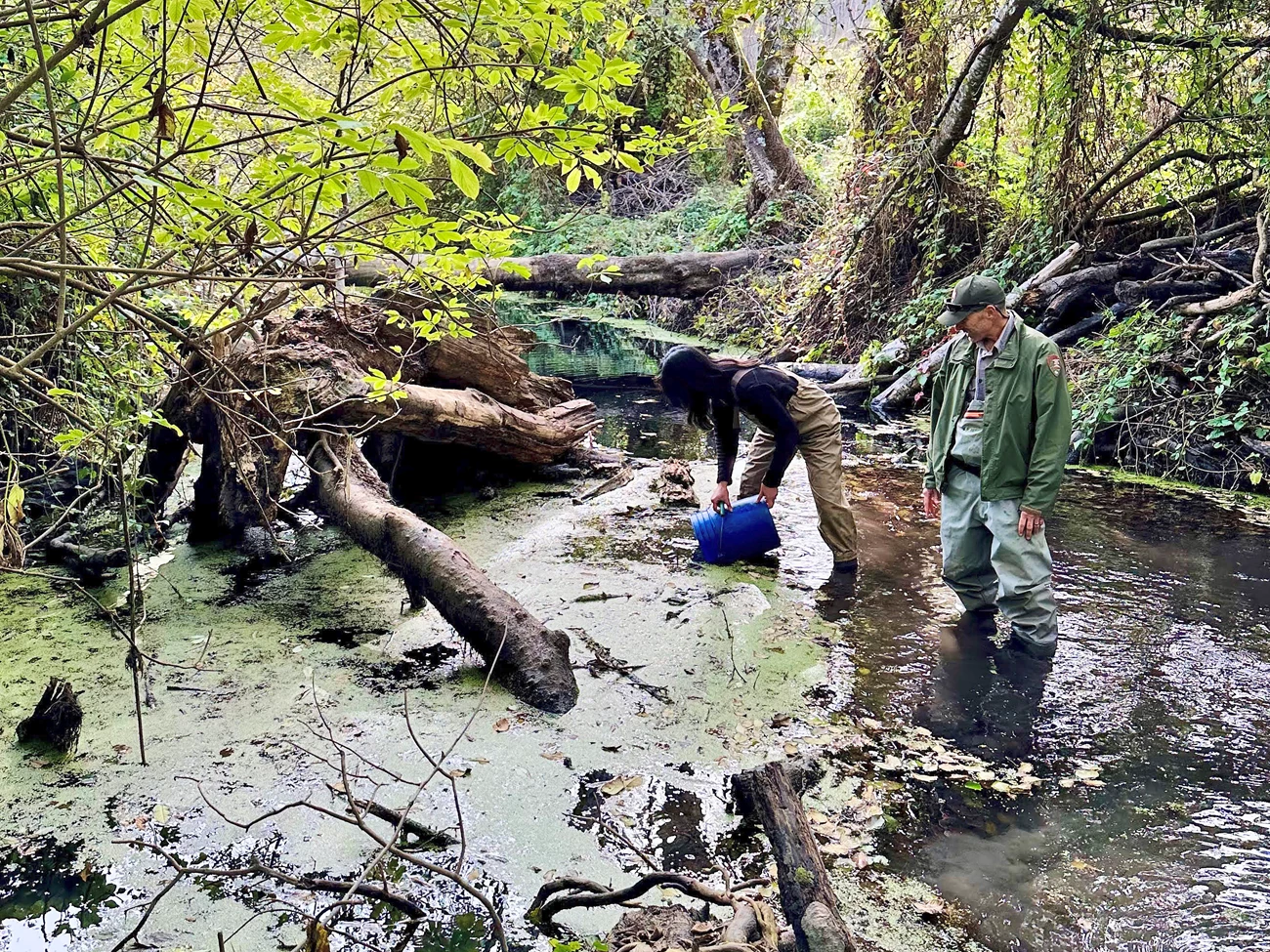
NPS
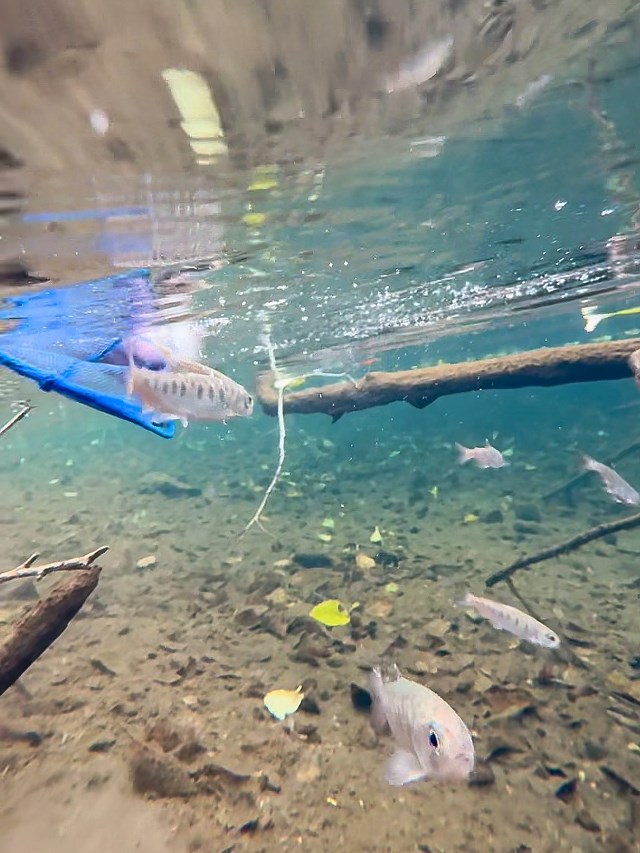
NPS / Environment for the Americas / Cameron Huynh
December 2024 - For two weeks in October 2024, the San Francisco Bay Area Network (SFAN) fish crew travelled daily to Lake Sonoma’s Warm Springs Hatchery. There, we marked approximately 3,000 juvenile coho with PIT (passive integrated transponder) tags for release into Redwood Creek which flows through Muir Woods National Monument. This effort was time well spent, as these fish present unique research opportunities—as well as a chance to increase the future viability of the small wild population in Redwood Creek.
From the information we gathered during our surveys last July in Redwood Creek, only around 500 juveniles survived to late summer. This is far fewer than anticipated given how many spawners and redds the fish crew spotted during the 2023-2024 spawner season.
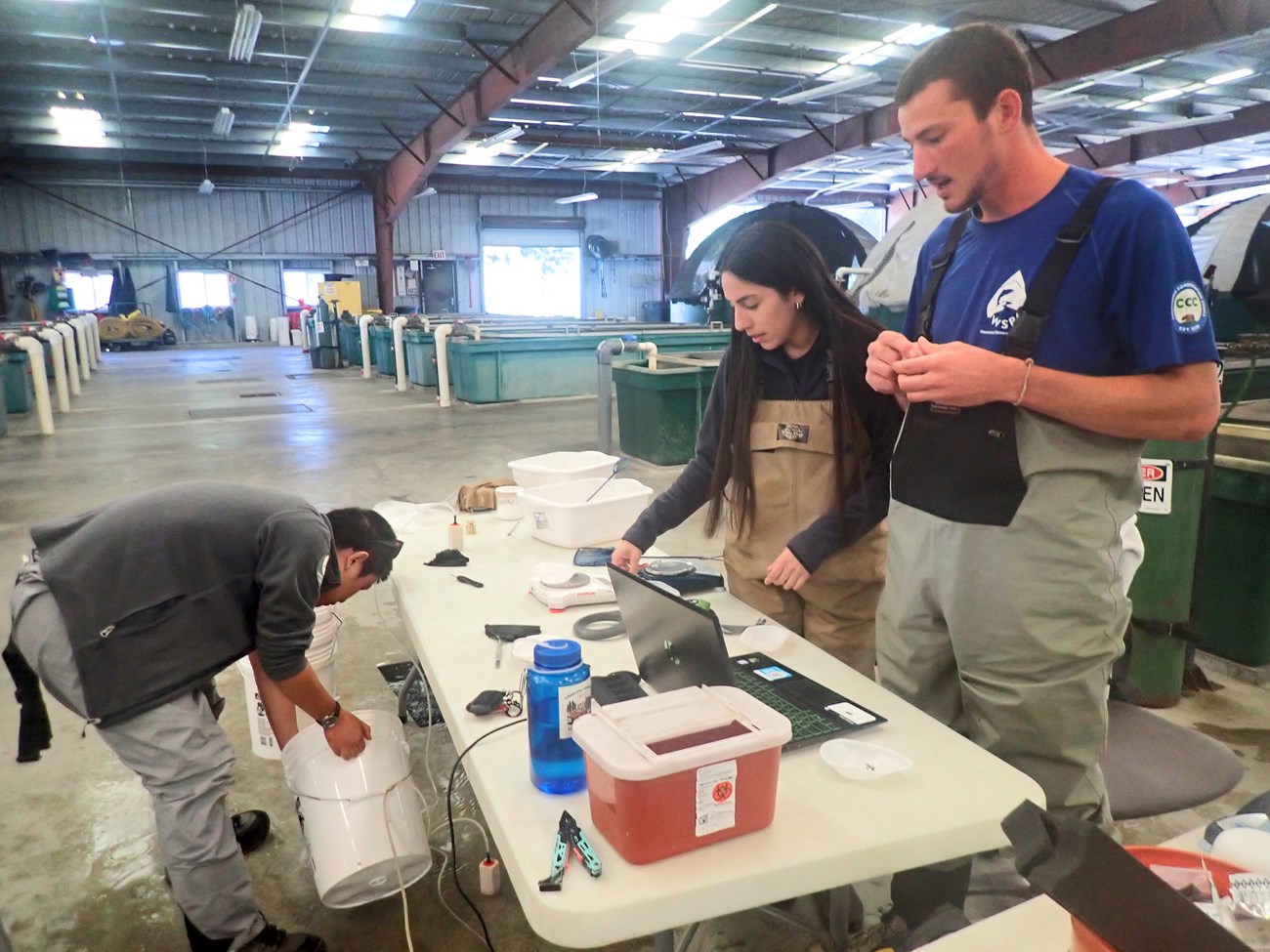
NPS / Brooke Harvey
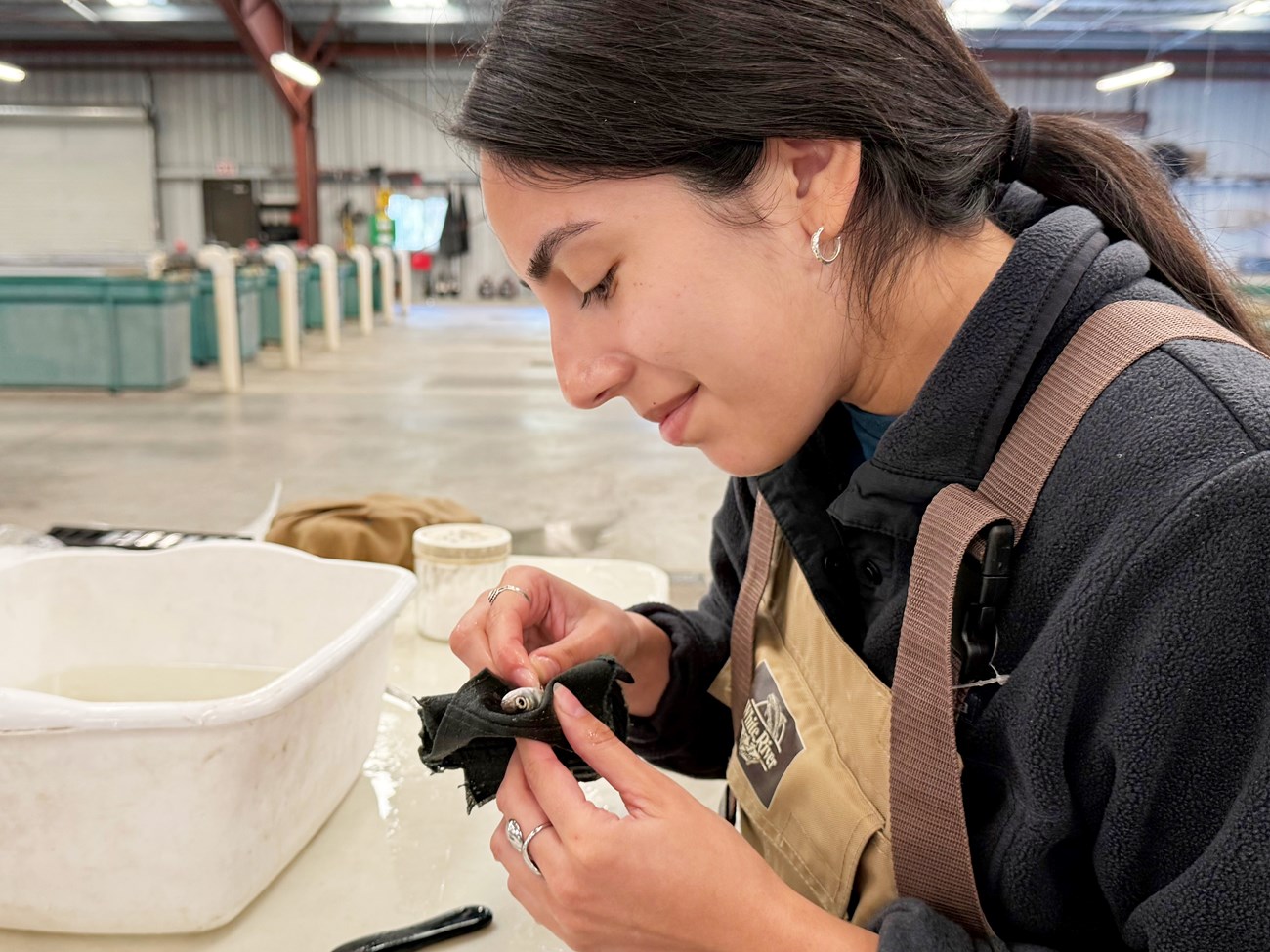
NPS / Justin Jang
With such a small population remaining in Redwood Creek, the National Park Service and regional recovery managers from both California Department of Fish and Wildlife (CDFW) and NOAA’s National Marine Fisheries Service decided additional juvenile coho were needed to increase the future viability of this small population. This mission was a great fit for Warm Springs Hatchery. As a conservation hatchery, it aims for informed hatchery fish releases that result in successful adult coho spawning. Adding fish to Redwood Creek to augment the wild population should achieve that. The fall hatchery release should further help by increasing genetic diversity when the wild and hatchery fish return as 3-year-old adults to spawn during the winter of 2026-2027.
As a monitoring team, we also see this release as a dual opportunity. It'll let us test the success of this augmentation strategy and compare the survival of these fish to those released in the Russian River Broodstock Program. The information collected on this release group in Redwood Creek will help in deciding whether hatchery augmentation is worth the investment in following years or a new release strategy needs to be employed.
The juvenile release will also give SFAN and Warm Springs a better idea about how hatchery fish fitness compares to wild fish fitness (using growth rates) and how hatchery fish outmigration timing compares to that of wild fish.
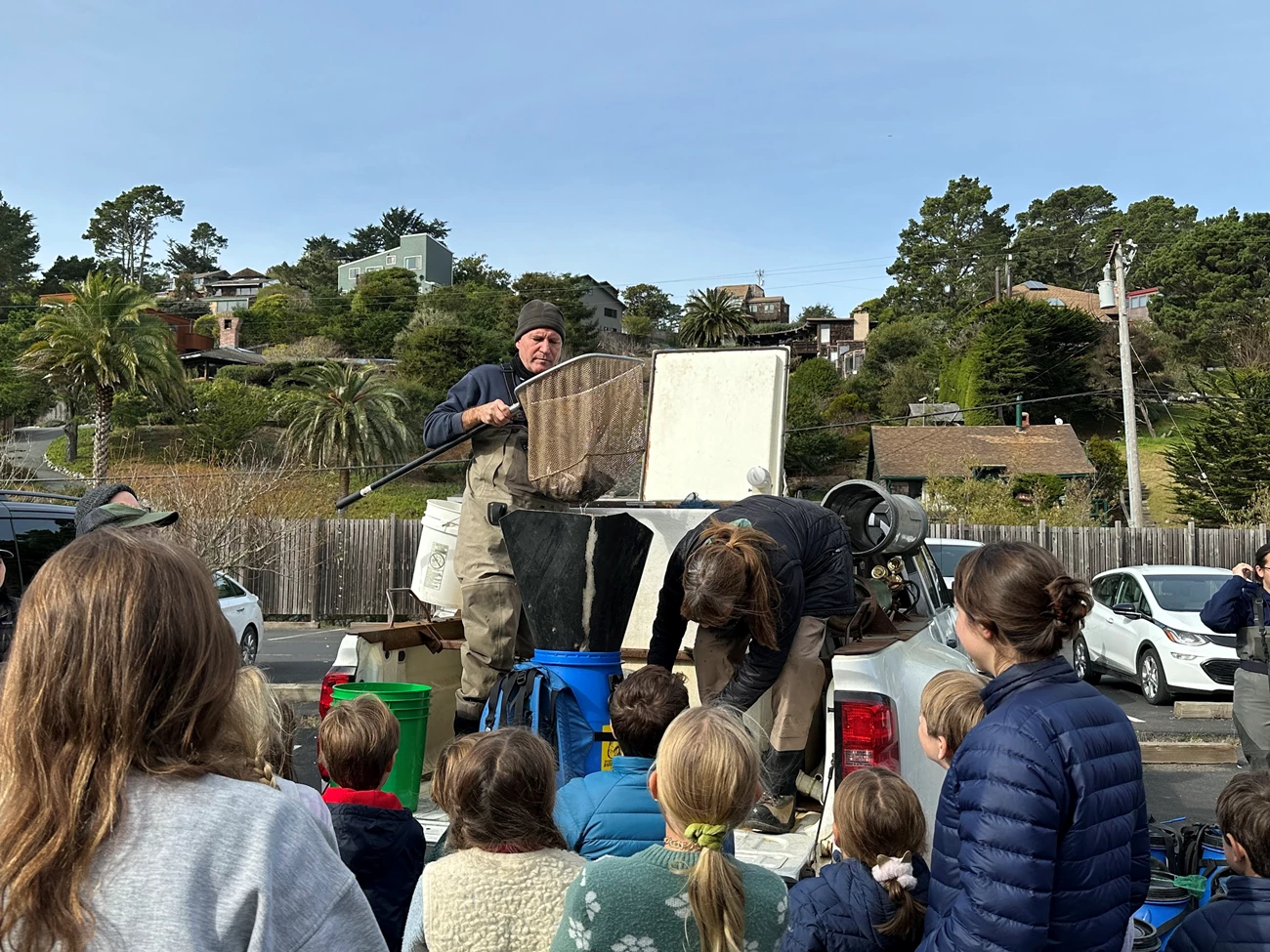
NPS / Point Reyes National Seashore Association / Gillian Campbell
After giving the tagged fish a few weeks to heal, we released them into Redwood Creek on Tuesday November 19, 2024. We were joined by Army Corps of Engineers staff from the hatchery as well as volunteers from Golden Gate National Recreation Area, Golden Gate National Parks Conservancy, and the CDFW. In teams of four, we worked our way up the creek and released juveniles in areas with suitable habitat (deep pools with woody debris cover) to give them the best chance of survival. When introducing juveniles, it’s important that the pool you are putting them in is attached to the mainstem and there is some sort of vegetation structure for protection from predators and high flow. We also made sure the pools we released fish into were spaced far enough apart to allow fish to naturally disperse without overcrowding any one area of the creek.
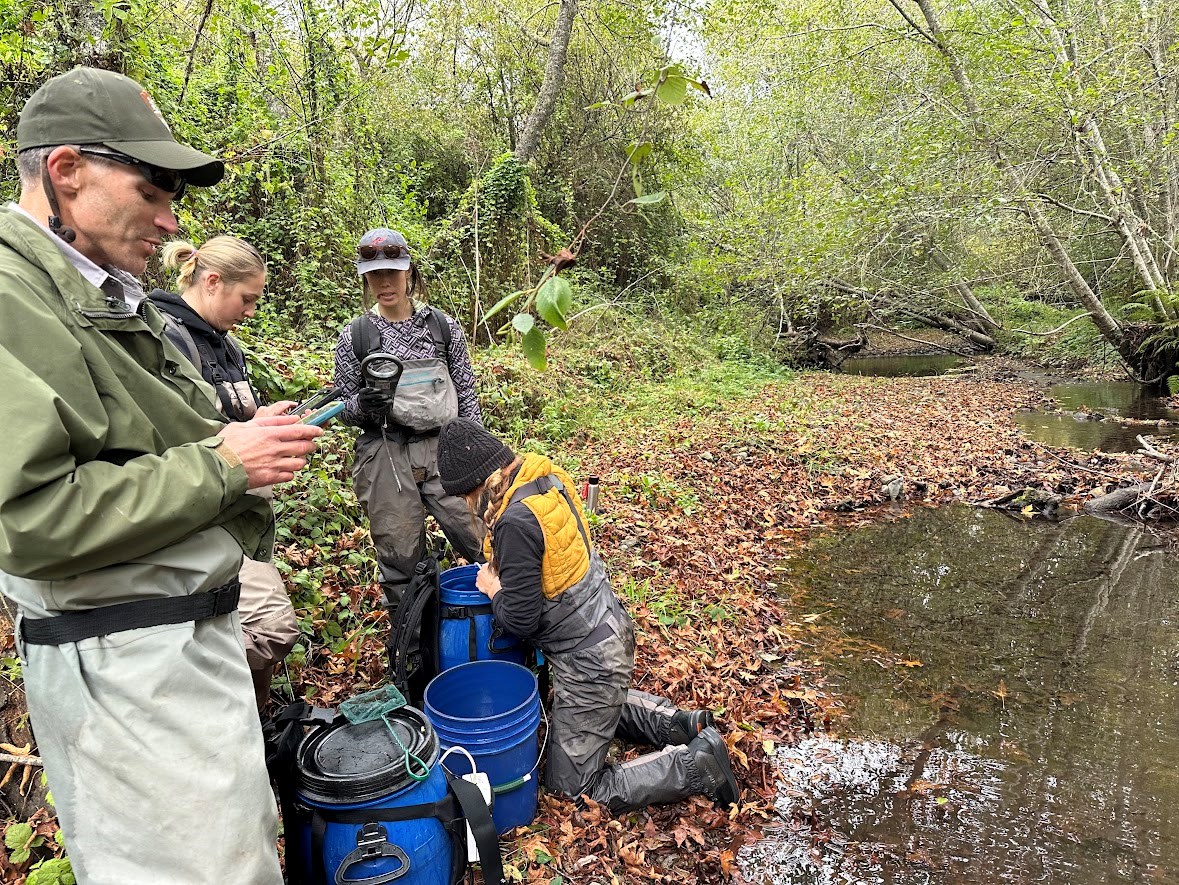
Golden Gate National Parks Conservancy / Michele Gee
With habitat restoration occurring in tandem with population-boosting efforts such as this, we hope to see higher returns of adult coho and successful spawning. Overall, the hatchery introduction was a major success, and we would like to thank everyone who came out to help and take part in the event!
For more information
- San Francisco Bay Area Network Salmonid Monitoring webpage
- Pacific Coast Science & Learning Center Coho & Steelhead webpage
- Contact Fishery Biologist Michael Reichmuth

